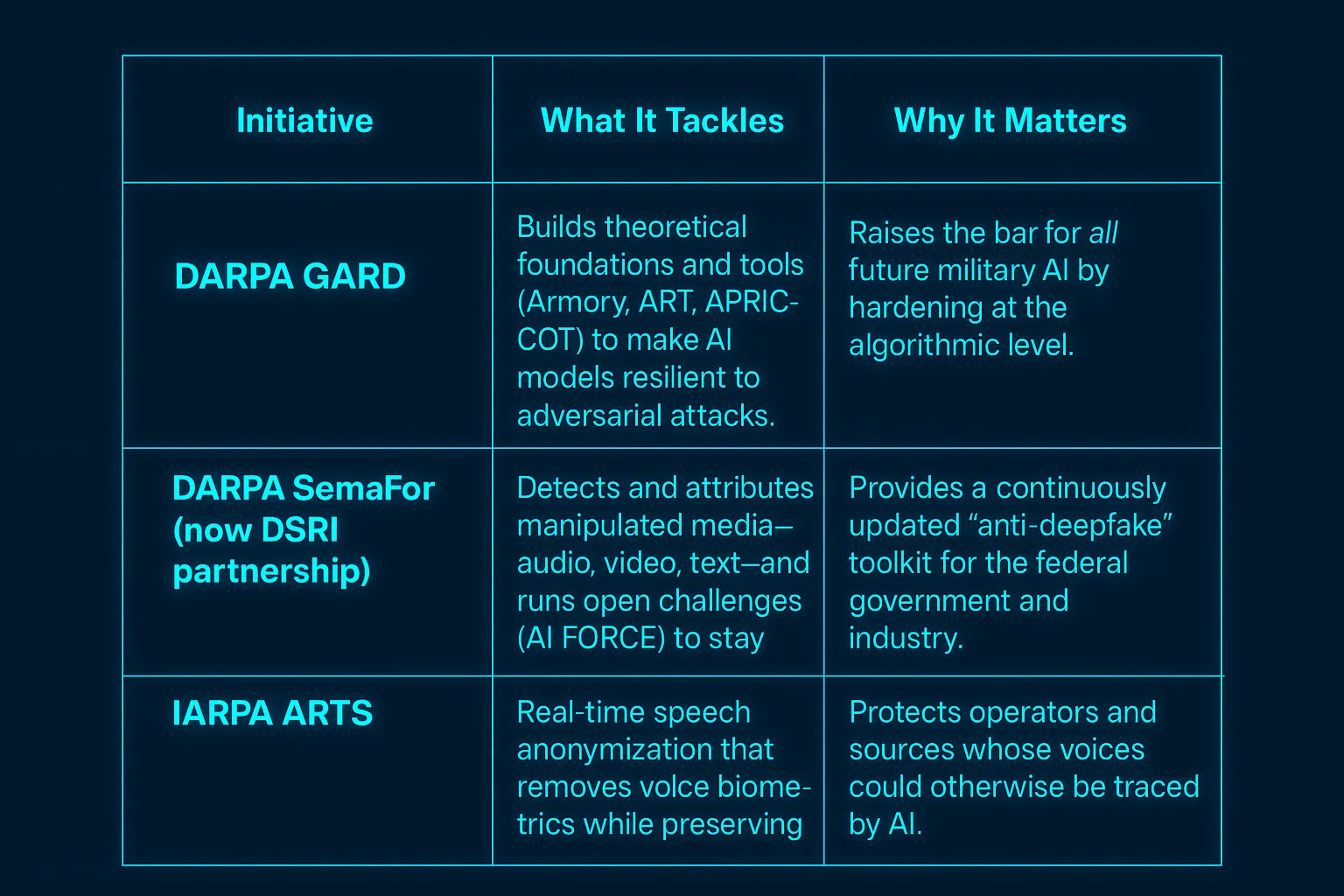At the height of the war in Ukraine, frontline brigades were field-testing home-built drones that cost as little as $350, upgrading the designs every few weeks to out-maneuver Russian counter-measures. In June 2025, these drones were used in a Ukrainian drone strike that severely damaged a key Russian airbase, knocking out 10%, according to a Reuters report, of Russia’s strategic bomber fleet. The attack not only caused billions of dollars in losses but also marked a turning point in asymmetric warfare, where low-cost, AI-enabled weapons can rapidly outmaneuver slow, industrial-era defense systems. This is the new battlefield: cheap, fast, and smart beats expensive and slow.
AI Supercharges the Tempo of Innovation
The above is an example of how the physical battlefield is changing. On the digital front, things are even more disruptive. Generative AI is cutting those cycles again. AI models refine tactics in simulation overnight, and open-source diffusion accelerates global adoption. The result: any breakthrough — good or bad — can hit the wild in days.
The Playbook Is Changing
Governments realized the need to adopt and are taking action. Israel’s DDR&D (“Mafat”) shows what agile collaboration can look like in their Mafat For Startups Program. Over 300 startups engaged, “Green Lane” contracts signed in weeks, and IP left with the founders — accelerating deployment without stifling innovation.
The U.S. and its allies are moving the same way: more challenge-based funding and field exercises that iterate quarterly. In the U.S., multiple programs now actively partner with universities and startups to fast-track battlefield-ready solutions.
A recent a16z podcast highlighted how exponential technologies and a rising wave of defense startups have forced the Department of Defense to rethink its traditional procurement model, spurring initiatives like the Defense Innovation Unit (DIU) to bridge Silicon Valley speed with national security needs. As the episode notes:
The DoD had to come to terms with the fact that innovation was happening outside its walls, and startups were building faster than the primes.
The AI Voice Front
Voice isn’t just another modality. In high-stakes environments — from field operations to government communication — it’s often the only interface that carries both intent and identity.
Conversational Authenticity
Five years ago, disinformation “audio leaks” were crude and easy to debunk. Based on a Guardian report from May 30th, a deepfake impersonation of White House senior advisor Susie Wiles was used in an apparent attempt to influence the legal proceedings against Donald Trump. The AI-generated voice, indistinguishable from Wiles, made calls trying to orchestrate witness coordination. This wasn’t fringe internet theater. It was a national-level threat targeting one of the most sensitive legal-political battles in the country, confirming that voice attacks are no longer speculative — they are operational.
The first, and perhaps most urgent security layer, is Deepfake detection and the ability to authenticate every stream of audio we listen to, in real-time.
Voice Privacy
In a world where microphones are ubiquitous — in our laptops and phones, on helmets, in vehicles, across comms infrastructure — your voice can be your biggest liability. That’s why voice anonymization and anti-cloning are becoming indispensable in modern defense and are required as a second layer of defense to prevent adversaries from cloning voices, tracking speech across systems, or exploiting speaker identity in psychological and information warfare.
AudioLLM Protection
As AudioLLMs gain adoption for transcription, translation, agent-based coordination, and other conversational AI use cases, the threat of adversarial audio becomes mission-critical. This approach strengthens AI models (e.g., ASR, SID, Speech-to-Speech) against manipulated inputs by exposing them to adversarial examples, using techniques like prompt injection and jailbreak.
Without a robust AI-voice protection layer, these models can be tricked into misinterpreting commands or leaking sensitive audio, undermining both operational security and human-AI trust.
Government Voice Technology Programs
In order to further accelerate progress, there are multiple programs aimed at collaborating with universities and startups to bring the latest technology to the battlefield.

Apollo Defend Contribution
Our team has contributed to both DARPA and IARPA performer teams, especially in acoustic forensics and adversarial robustness, giving us an insider’s view of how threats mutate and how evaluation pipelines are built. That experience now powers Apollo Defend’s multi-layer voice-security stack (deepfake detection, AudioLLM shielding, and real-time anonymization).
What The Future Holds
Defense is no longer just about better weapons or encrypted networks. It’s about protecting trust itself — whether it’s a command chain, a courtroom, or a democratic election. That trust can now be undermined in seconds by synthetic media and adversarial AI. The tempo of threat is no longer linear. It’s exponential, and the defense strategy must match that curve.
Startup-speed innovation doesn’t mean moving recklessly. It means designing systems that evolve in real time, prioritize measurable outcomes over bureaucratic cycles, and tap into a global pool of specialized expertise. The AI battlefield favors those who test faster, iterate more aggressively, and deploy updates like software, not hardware. In this war, slow is not safe. It’s obsolete.

 Roy Zanbel
Roy Zanbel
